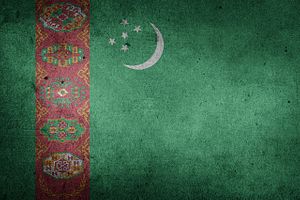For Central Asia-watchers, the recent presidential in Turkmenistan was as much of a farce as many expected it to be. While Ashgabat presents far more of a political black box than any other regional autocracy, Turkmenistan’s incumbent president, Gurbanguly Berdymukhamedov — perhaps best known to those outside the region for his physical, tracksuit-clad exploits — didn’t disappoint in the recent vote.
As The Diplomat’s Catherine Putz detailed, over 97 percent of Turkmenistan’s voters, according to official figures, poured into the polls. Ignoring the recent raft of indicators all pointing to economic downturn, voters in Turkmenistan — according to the official story, at least — decided to re-elect Berdymukhamedov by the staggering, and unbelievable, margin of 97.69 percent. As Putz wrote, it was “a crushing victory to rival that of Central Asia’s other wildly successful presidents.” Of course, as with all of Turkmenistan’s prior elections, the recent vote was neither free nor fair. Indeed, this one, as RFE/RL reported, included students fabricating ballots “for the people who will not show up.”
The final score is a clear indicator that the election was, as with all past, yet another round of political consolidation for Berdymukhamedov’s regime. But it’s worth noting that Berdymukhamedov’s tally wasn’t the most fantastical Central Asia has seen in its post-Soviet independence.
In reality, Berdymukhamedov’s tally isn’t even the highest Turkmenistan has ever seen. As the indomitable Bruce Pannier wrote back in 2007, Berdymukhamedov’s predecessor, Saparmurat Niyazov, kicked off Ashgabat’s post-Soviet independence by taking 99.5 percent of the vote in Turkmenistan’s first presidential election in 1992. Niyazov’s score surpassed that of Kazakhstani President Nursultan Nazarbayev, who, a few months prior, had taken 98.8 percent in Kazakhstan’s first presidential election. That 1991 election helped cement Nazarbayev’s place atop Kazakhstan’s dictatorship, with the president, still ensconced in Astana, now quickly closing in on his third decade running the country. Berdymukhamedov also fell just short of Nazarbayev’s most recent tally, with the Kazakhstani president nabbing 97.7 percent of the 2015 vote — a margin for which he later pointedly apologized.
While he may not have surpassed Niyazov’s or Nazarbayev’s tallies, Berdymukhamedov can at least take solace that the recent returns beat the highest margins out of Uzbekistan and Tajikistan. In the latter, President Emomali Rahmon topped out at 97.6 percent of the vote in 1999, while the recently deceased Islam Karimov managed to record 95.7 percent of the vote in 2000. In Kyrgyzstan, meanwhile, ousted autocrat Askar Akayev landed 95.4 percent of the vote in 1991 — a margin none of his successors have topped.
Despite the margin of victory, this may well be Berdymukhamedov’s last political go-round in Ashgabat. As the University of Glasgow’s Luca Anceschi noted during the election, “If [Berdymukhamedov’s] economic policy doesn’t change, there’s every chance he won’t run in 2024.” And at this point — given the abject failures in Ashgabat’s attempts at non-Chinese pipelines, to say little of the regime’s empty attempts at economic diversification — Berdymukhamedov may have just seen his last claims to electoral victory. Ninety-seven percent is impressive, if you want it to be; but not if it’s a farce, and not if it comes as the country barrels into economic stagnation.

































